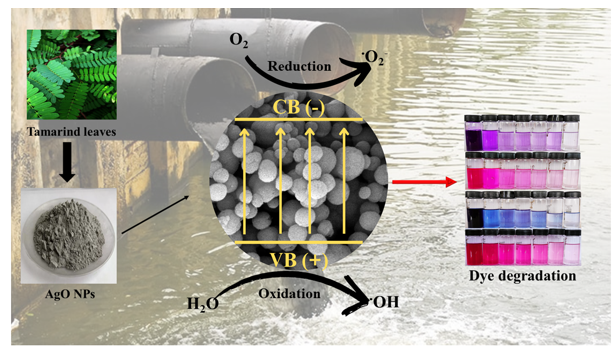
In this study, tamarind leaf extract was used to effectively produce silver oxide (AgO) nanoparticles. Crystal violet (CV), Alizarin red (AR), Reactive black (RB), and rhodamine b (Rh B) degradation were examined to evaluate the effectiveness of AgO NPs. XRD patterns, UV-visible spectroscopy, Fourier transform infrared spectroscopy, and scanning electron microscope was used to analyze the AgO NPs. SEM observations showed spherical morphology size ranging at an average of 58.17 nm. Silver and oxygen were the only elements in the nanostructure, as shown by EDS chemical maps. The synthetic silver nanostructure, with a crystal size of 38 nm, was verified by X-ray diffraction to have the usual cubic structure. The nanostructure showed degradation efficiencies in Crystal violet, Alizarin red, Reactive black, and Rhodamine B, indicating excellent degradation efficiency. All of these results point to the effective production of AgO NPs without the use of any hazardous chemicals, and they point to this material as a potentially beneficial substance for eliminating toxic dye from wastewater made by commercial colouring processes.
Total file downloads: 17